What is bioassessment?
Each spring, the Estuary Program ventures into local creeks that drain into Morro Bay to conduct bioassessment monitoring. Part of this effort involves collecting benthic macroinvertebrates from creeks within our watershed. Benthic macroinvertebrates are bottom-dwelling animals that lack a backbone and are visible to the naked eye.
Benthic macroinvertebrates are known as biological indicators (or bioindicators), since their presence and abundance can tell a story about water quality conditions. For example, if we collect a variety of pollution-sensitive species are, we can conclude that the creek conditions are likely good. Among others, common macroinvertebrates include mayfly, stonefly and dragonfly larvae, as well as aquatic snails and midges.
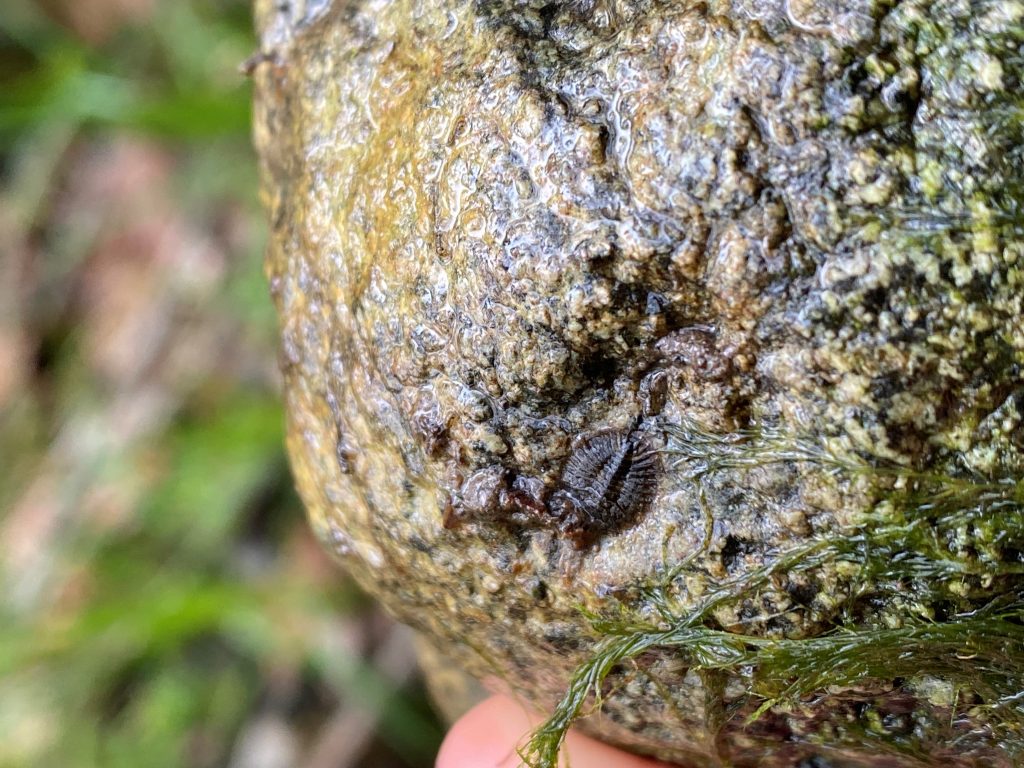
During bioassessment surveys, staff also collect a wide variety of habitat measurements including water depth, canopy cover (how much the surrounding trees shade the creek), and rock size. These things tell us whether the creek might provide high quality habitat for macroinvertebrates that live in the creek and for the fish that feed on those macroinvertebrates. Typically, medium-to-large sized rocks provide better habitat for macroinvertebrates than do sand and clay. Sites with lots of shade also tend to provide good habitat since they stay cooler throughout the day.
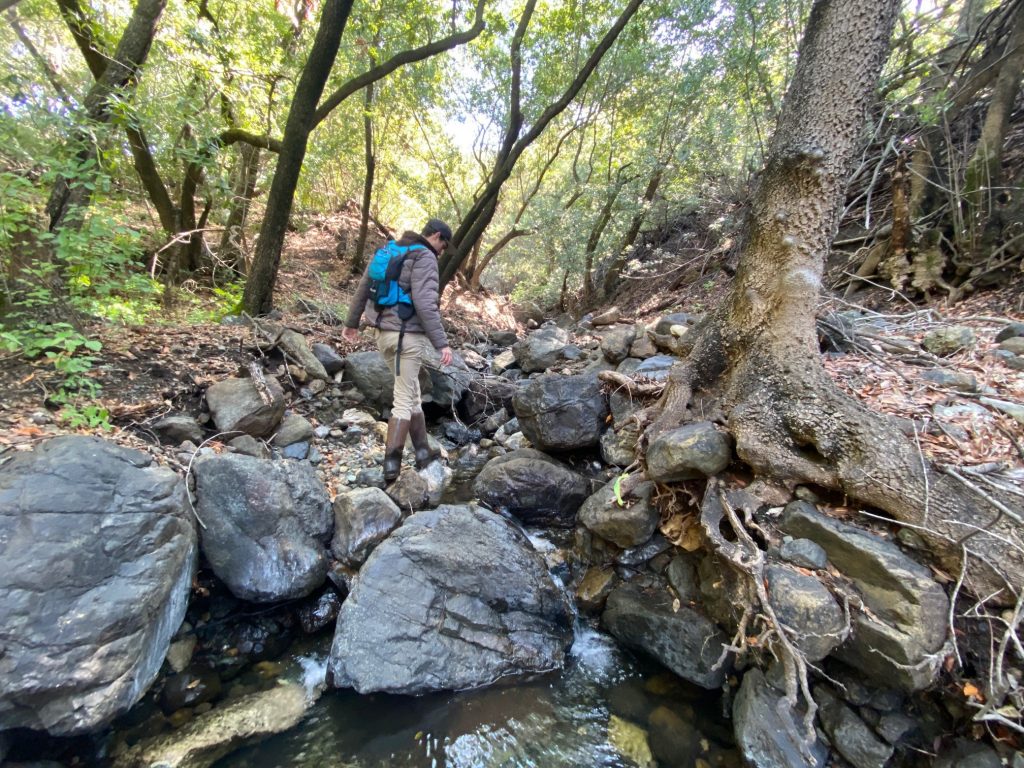
Scouting monitoring sites for spring 2022
Our team spends the late winter and early spring preparing for the busy field season. An important part of this includes scouting sites on local creeks to determine which ones we want to monitor and to determine the optimal timing for the surveys. During years with little rainfall, our surveys need to take place earlier than normal so that we can complete our work before the creeks go dry.
During scouting trips, our staff visit potential survey locations and walk a 150-meter stretch of creek. Staff assess each site safety and access, as well as macroinvertebrate life stage status. Because macroinvertebrates live at bottom of the creek bed, we flip over rocks to check for macroinvertebrate presence and see where they are in their life cycle. We’re hoping to see some in their larval stage and some still in their egg mass stage. Ideally, we can collect samples just as they are hatching out.
Staff also assess site conditions with safety in mind. A site that might have been accessible in past years may not be passable anymore, due to a wall of poison oak growth or a new debris jam caused by a large storm during the previous winter. Situations like these may necessitate our moving the site to avoid the barrier.
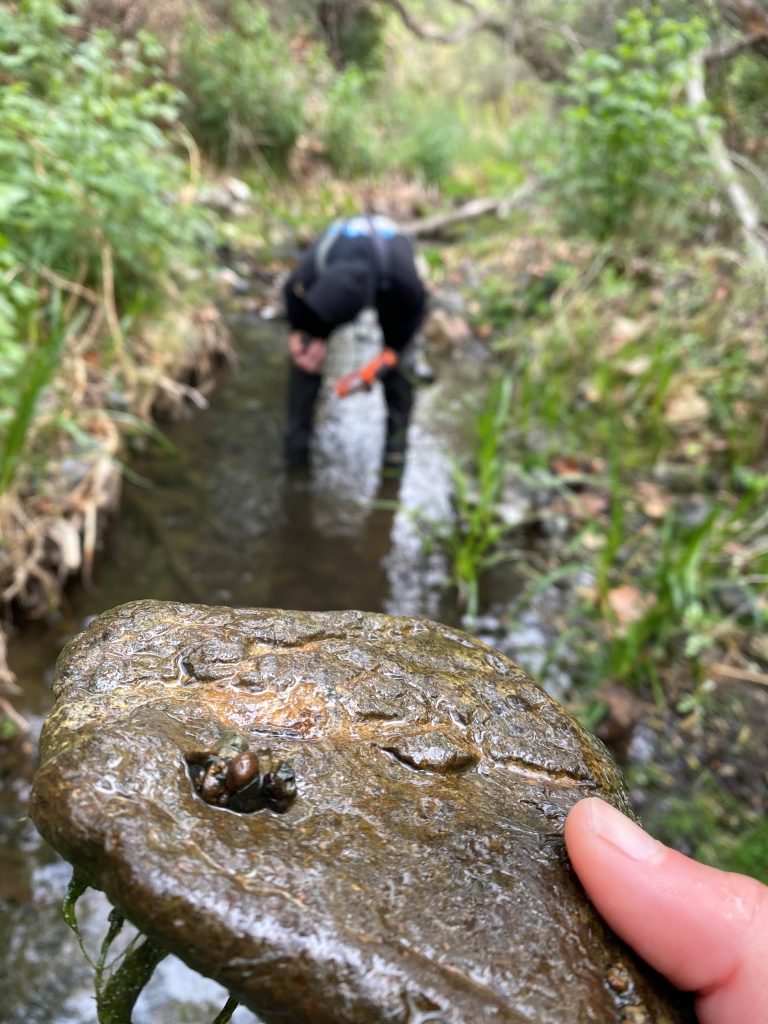
Wildlife sightings
An exciting addition for the 2022 surveys will be a new bioassessment monitoring site on Chorro Creek above the Chorro Reservoir. This will be the furthest upstream site on Chorro Creek that we’ve ever monitored. While checking out the site, our staff came across a California red-legged frog.
California red-legged frogs are a federally listed threatened species that are native to this region but rarely found outside of the upper regions of the Morro Bay watershed. California red-legged frogs are also the largest indigenous frogs in the western United States, ranging from two to five inches in length. The frog we observed was an adult on the upper end of the size range at about four inches long.
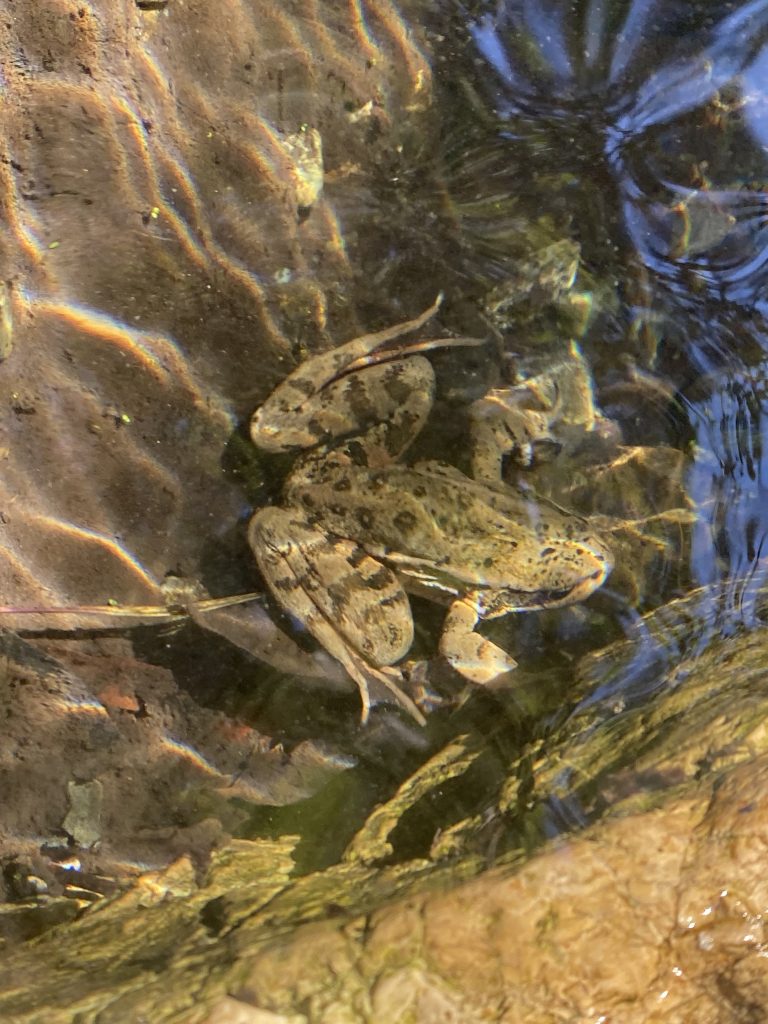
This year, our team will also return to two locations on upper Pennington Creek that we monitored for the first time last year. Both are high up in the watershed where human impacts are minimal. Here, staff found some exciting wildlife including quite a few California newts and a Western bobcat.
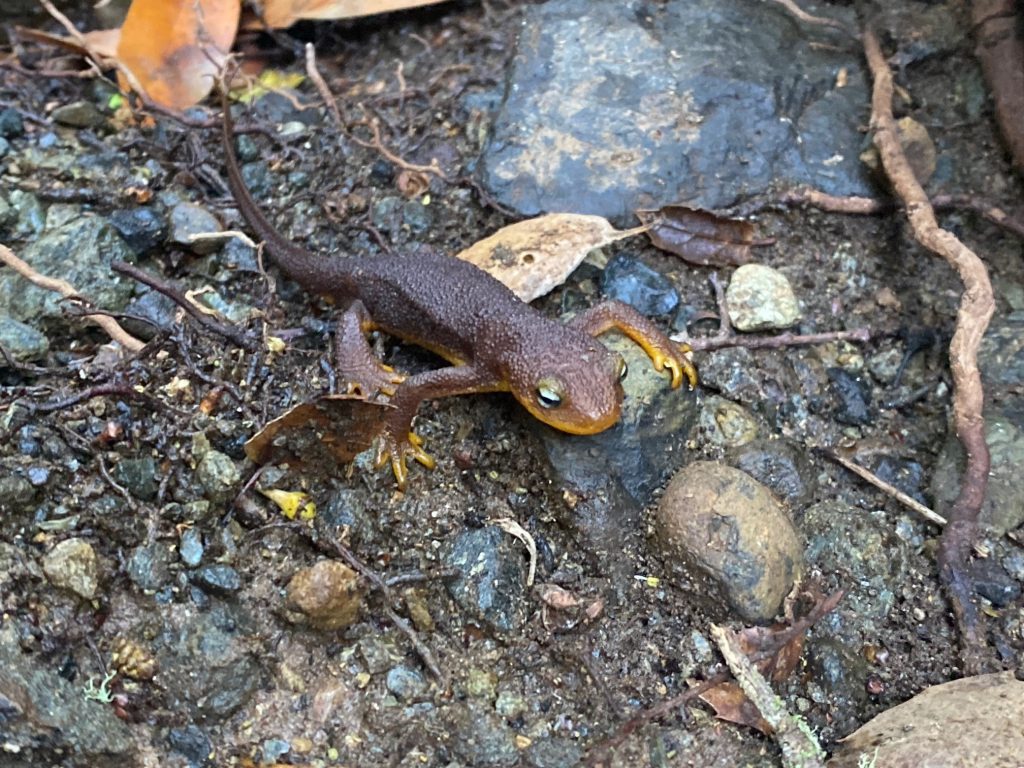
Recognition of the Harold J. Miossi Trust
This important watershed data would not be possible without the support of the Harold J. Miossi Charitable Trust. The Trust has contributed $103,425 to the effort from 2013 to 2022. This detailed work requires hours of staff time as well as expensive analysis by a taxonomic lab (where specialists carefully observe and identify the macroinvertebrates we collect), and the support of the Trust makes collection of this important data set possible.
Bioassessment is coming to the SLO Watershed!
The Miossi Trust was interested in expanding this monitoring effort into the neighboring San Luis Obispo watershed. The Trust approached us with this idea, and we worked together to develop a partnership with Cal Poly and the city of San Luis Obispo to conduct bioassesssment monitoring at sites on San Luis Obispo and Stenner Creeks. Our staff is lending expertise and technical support to help get the effort going. We look forward to sharing results from both watersheds later this year!
COVID Impacts Surveys
In our pre-2020 surveys, bioassessment was conducted by staff and a large crew of volunteers. Although the threat of COVID is waning, staff opted to play it safe and work with a smaller survey crew including AmeriCorps Watershed Stewards Program members and Cal Poly Natural Resources Management students who have some prior training.
Once the busy bioassessment season ends, we are hoping to begin recruiting and training volunteers for creek water quality. Additionally, we are developing some bay monitoring efforts for the fall that would require volunteer support. If you are interested in volunteering in the future, please complete a volunteer interest form, which you can find at www.mbnep.org/volunteer.
Subscribe to our weekly blog to have posts like this delivered to your inbox each week.
Help us protect and restore the Morro Bay estuary!
- Donate to the Estuary Program today and support our work in the field, the lab, and beyond.
The Estuary Program is a 501(c)3 nonprofit. We depend on funding from grants and generous donors to continue our work. - Support us by purchasing estuary-themed gear from ESTERO. This locally owned and operated company donates 20% of proceeds from its Estuary clothing line and 100% of Estuary decal proceeds to the Estuary Program. Thank you, ESTERO!
- Purchase items from the the Estuary Program’s store on Zazzle. Zazzle prints and ships your items, and the Estuary Program receives 10% of the proceeds. Choose from mugs, hats, t-shirts, and even fanny packs (they’re back!) with our fun Estuary Octopus design or our Mutts for the Bay logo.
Thank you for helping our beautiful, bountiful, biodiverse bay!